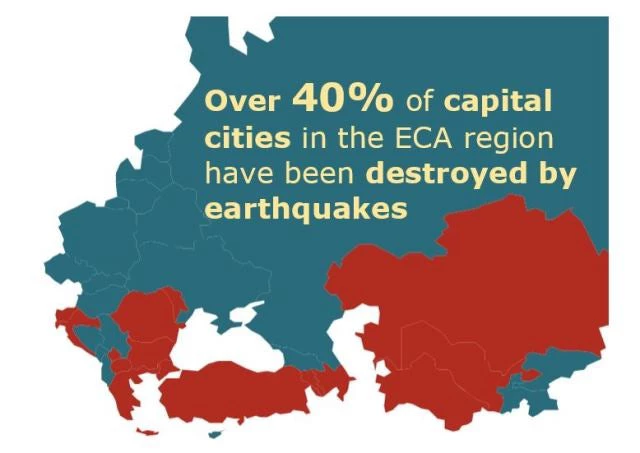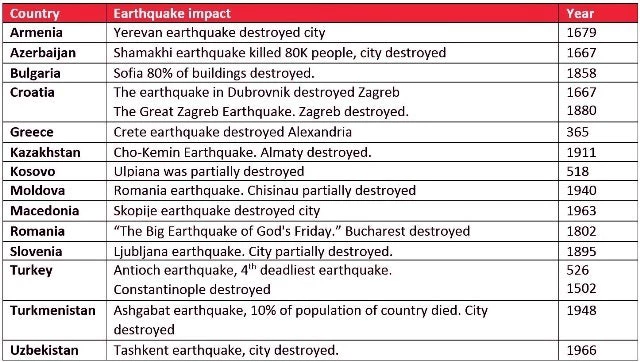
By now everybody is witnessing the devastating consequences of the 7.8 magnitude (Richter scale) earthquake in Nepal. According to the latest figures, more than 7,000 people have died and more than 10,000 have been injured. These numbers are likely to increase as the authorities and relief agencies reach more remote locations.
While the total economic impacts of this earthquake are not fully known yet, preliminary figures from the Nepal Minister of Finance suggest that the overall cost could reach $10 billion – or approximately 50% of the country’s GDP. But, again, this estimate is preliminary and will likely increase.
In light of this event we asked ourselves a series of questions:
When will the next catastrophic earthquake hit? Where will it be? Is it going to be in East Europe and Central Asia (ECA) region? Are we prepared for it?
The answers to these questions are both simple and complex. The first question is the easiest - we simply don’t know for sure; it could be tomorrow or next month or in a number of years.
However, we do know that a big one will eventually hit the ECA region based on past historic events.
In ECA we are sort of privileged, in that the recurrence of catastrophic events in the region is not as frequent as in other regions in the world. Although actual risk in the region is extremely high, many major disasters in the region are now several decades old and are often forgotten by countries.
Let’s take a look back in history. The table below shows a quick overview (not complete) of the earthquakes that have severely impacted the capitals of the listed countries.

No other region in the world can cite this very scary statistic: over 40% of the capitals of the region have been totally or partially destroyed by earthquakes at some point in history.
And today they continue to face a similar - or even higher - risk of a catastrophic earthquake.
Assuming that at least one of these catastrophic events will repeat in our lifetime (very likely), the consequences of could be devastating. This is simply because today we have more infrastructure and a larger population living in same area.
The concentration of these elements, combined with the vulnerability of the construction and the constant seismic hazard, makes the exposure to seismic risk very high.
Unfortunately, there are only few countries that have taken this issue seriously and have invested in reducing their vulnerability to seismic risk systematically.
In my view we are very lucky to have a low frequency of these events - providing us with an opportunity to reduce the risk. I think events like the Nepal earthquake provide us a good moment to i) rethink and evaluate where we are in terms of reducing the seismic risk in the region and, hopefully, reprioritize investments in order to reduce and to avoid the creation of risk; and ii) to prepare ourselves to respond better to these disasters, which will inevitable happen - maybe tomorrow; maybe next month; maybe next year. We don’t know when for sure, but we do know it will happen.
Are we ready?


Join the Conversation